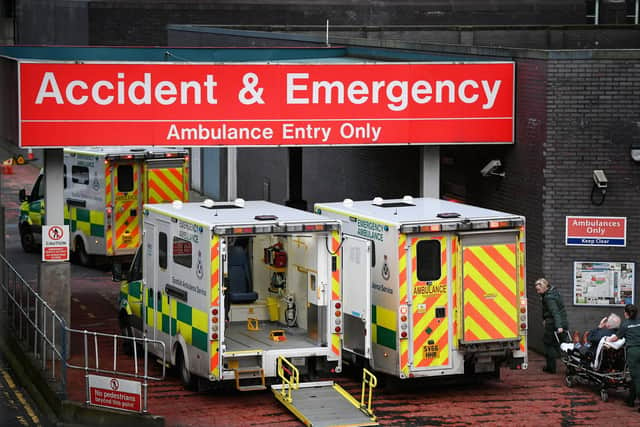NHS winter crisis: What A&E figures tell us about the state of Scotland's hospitals
It might not be the open goal opposition parties seem to think – as similar pressures are being born out in the rest of the UK – but the figures are a key indicator of how the NHS is doing. And since Mr Yousaf took office in May last year, a new record low for the percentage of A&E patients waiting more than four hours has been set 14 times.
The figures tell us two things. On the surface, the data shows us how the NHS is doing in one of its core jobs – treating people in emergencies – but it also gives a key indicator in how the hospital, and the wider healthcare system, is doing.
Advertisement
Hide AdAdvertisement
Hide AdIf the patients flowing into the hospital aren’t being admitted promptly, it’s because there are very few beds available, although understaffing and surges in patient numbers can play a factor.


In hospitals experiencing A&E pressures, ward beds are unavailable due to ‘delayed discharge’, where patients who are well enough to be discharged to community care can’t be, because there’s a shortage of spaces in care homes or a shortage of community care staff.
An elderly patient who has had a routine operation, for example, but needs a carer to visit once a day, may not be discharged from the hospital until that care plan is in place. However, if there are staffing problems in the community care team, which there frequently is, the patient can’t be released from hospital.
Across the country, health boards and private companies are struggling to retain and recruit care staff, due to poor pay and conditions, and the trauma of working through the pandemic in care settings.
Because A&E figures can give us an indication of pressures elsewhere in the healthcare system, we can see how Scotland’s NHS is faring heading into the winter – when strikes, influenza, coronavirus and bad weather will heap further pressure on a creaking system.
Comments
Want to join the conversation? Please or to comment on this article.